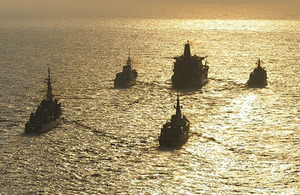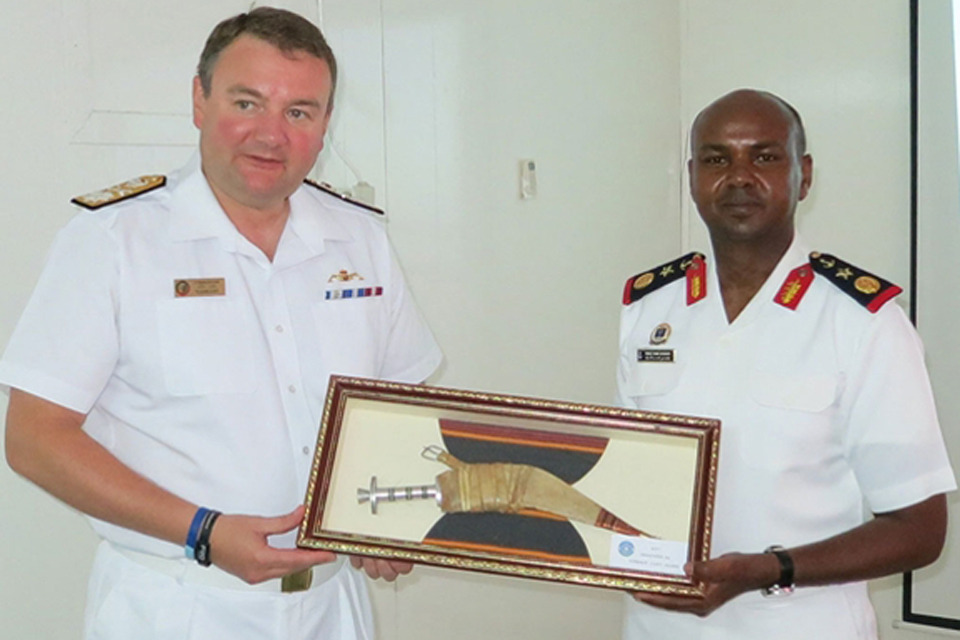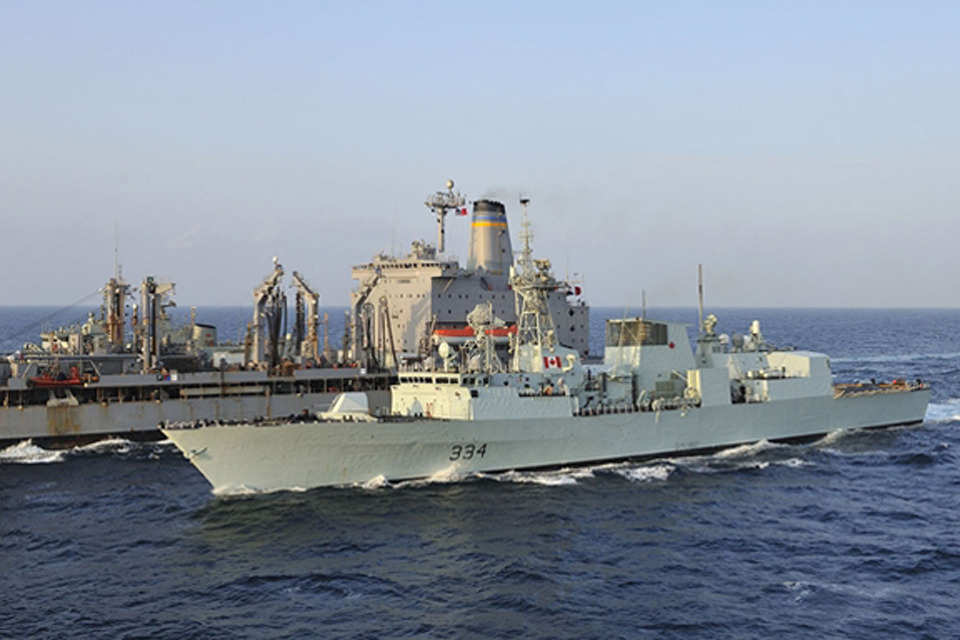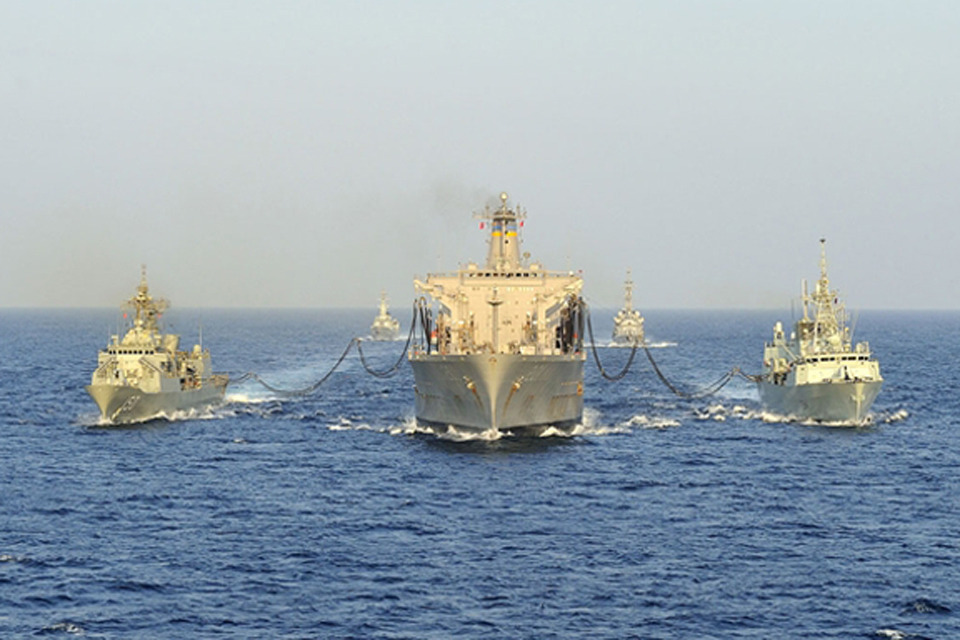Royal Navy directs anti-terror sweep
Two dozen Royal Navy personnel have overseen a concerted effort to tackle terrorism and piracy in the seas east of Suez.

Combined Task Force 150 conducts a replenishment at sea
Over 5 days, an international force of warships and coast guard vessels focused their attention on either side of the crucial Bab-el-Mandeb Strait separating the Arabian Peninsula from Africa.
There is no Royal Navy warship here - the 2 British frigates assigned to the east-of-Suez maritime security mission, HMS Northumberland and Monmouth, were elsewhere carrying out similar policing duties.
But the actions of the 5 vessels in Combined Task Force (CTF) 150 were directed by two dozen British sailors and Royal Marines, choreographing Operation WENLOCK - as the five-day sweep was codenamed - from their headquarters in Bahrain.
The British staff directed the force to detect and disrupt terrorist-related use of the seas on both sides of the Bab-el-Mandeb Strait at the foot of the Red Sea.

Commodore Bob Tarrant RN and Lieutenant Ali Bouh, Djibouti Navy Operations Officer [Picture: Corporal Rick Ayer RCN, Crown Copyright/MOD 2012]
Just 11 miles (17.7 kilometres) wide at its narrowest point, the strait - known in military jargon simply by its acronym ‘BAM’ - is one of the world’s great ‘choke points’; if blocked by terrorist action it would have serious ramifications for all the world’s shipping.
The operation also gave the Djiboutian Navy and Coast Guard the chance to participate in joint planning as well as play their part as a fully-integrated partner in a combined naval force.
Lieutenant Ali Bouh, Djibouti Navy Operations Officer, said:
The operation allowed us and coalition forces to present a united front against illegal activity in our goal to effectively stamp out illegal maritime activity in the region.
This co-operation will make the area safer for shipping from all around the world.

Canadian ship HMCS Regina [Picture: Corporal Rick Ayer RCN, Crown Copyright/MOD 2012]
For WENLOCK, Canada’s HMCS Regina operated in the southern Red Sea with Yemeni personnel embarked, while HMAS Anzac was in the Gulf of Aden with Djiboutian Navy and Coast Guard personnel onboard.
Also in support of the operation in the Gulf of Aden were Djiboutian patrol craft, Pakistan’s PNS Shamsheer and France’s FS Dupleix, plus the American tanker USNS Patuxent.
Such a concerted effort by the Task Force is unusual - the ships typically operate individually, spread across hundreds of miles of ocean (the operational area of CTF 150 covers 2.5 million square miles (6.5 million square kilometres) of sea), working towards a common aim.
The scale of the task has been likened to providing police cover for an area the size of western Europe with half-a-dozen patrol cars.

Combined Task Force 150 conducts a replenishment at sea [Picture: Corporal Rick Ayer RCN, Crown Copyright/MOD 2012]
The chance to focus efforts in one particular area took several months of planning by Commodore Bob Tarrant and his staff - and it paid off:
Only through working together in the future will we be able to detect and disrupt those who wish to use the sea for illicit purposes and I was delighted with what we have achieved in this operation.
Operation WENLOCK provided a unique opportunity for Combined Maritime Forces members and our regional partners, such as Djibouti and Yemen, to work together to build on our understanding of the patterns of life and to reassure the legitimate maritime traffic that transits through the area.
It has been a privilege to lead these maritime forces from different nations.
Command of the Task Force passes around the two-dozen-plus nations committed to the Combined Maritime Forces, with the Royal Navy’s latest tenure drawing to a close.